In the second part of this practical series on how to start a nature journal, we’ll take a look at pencils, pens and ways to add color to your sketches.
Things to keep in mind when choosing tools:
- Keep it light: if you want to sketch outside, you’ll have to carry your tools. It makes more sense to bring a few proven pens that can be used in different ways than to carry a big variety of pens you can’t keep apart.
- The same goes for watercolors or colored pencils. A good basic palette is lightweight and practical and you will actually benefit from working with a limited palette too.
- A pencil is essential, it’s usually what you start your sketch with. For some people it’s the only thing they need to draw in the field. I like a small variety of pencils with different degrees of hardness: a standard HB, a harder one (3H), and a soft one (2B) to add darker areas. You’ll notice that while the harder pencils are great to indicate light shapes, you’ll need a softer pencil if you want to cover the full tonal range.
- There are different kinds of erasers, and other tools to manipulate your graphite drawing. I like to have a plastic eraser with a thin tip, and a small putty eraser. A small knife can work as a replacement for a pencil sharpener (and many more things).
- One or two pens in black, brown or sepia are great for writing, or for simple ink drawings. I like pens with waterproof ink so I can add watercolor washes over them. You can also use a fountain pen if you prefer (some of them work with waterproof ink). Also, a pen with a brush tip in medium grey can be great for value studies.
- White gel pens or white gouache are great for adding highlights
- A small watercolor palette with 12-18 colors is great for adding color to your sketches. Choose pigments that work well for mixing and don’t produce muddy colors. Similarly, it can be nice to bring a small gouache palette, so you can add highlights over your dark areas. As for palettes, there are small travel palettes in metal and plastic. Use what you have or what works best for you. You can also reuse a metal mint box.
- As a brush, either a travel brush or a brush pen with a tank works best in the field. If you prefer your normal brush, you need to find a way to protect it from bending the bristles. A small water container and a rag is also needed for watercolor work (you don’t even need the first one if you work with water tank brushes).
- Colored pencils are another great way to quickly add color to a sketch. There are also colored pencils that will react with water. A small selection with basic colors that you can mix will work fine. I like to bring the small pencil stubs that have gotten too short to hold for a long time – they’re great in the field where you won’t use them very long and they don’t add much weight.
And that’s basically it! The key is to keep your sketching toolkit light and accessible. If you have to search through your backpack for every single item, your subject might be gone when you’re ready if it’s an animal. Of course, plants and landscapes are more patient.
Please keep in mind: There is no „perfect sketching kit“ – everyone is a bit different and likes to work with different tools. You’ll also find that you might change your materials from time to time. That’s perfectly fine.
Here’s a look at my current field kit for sketching:

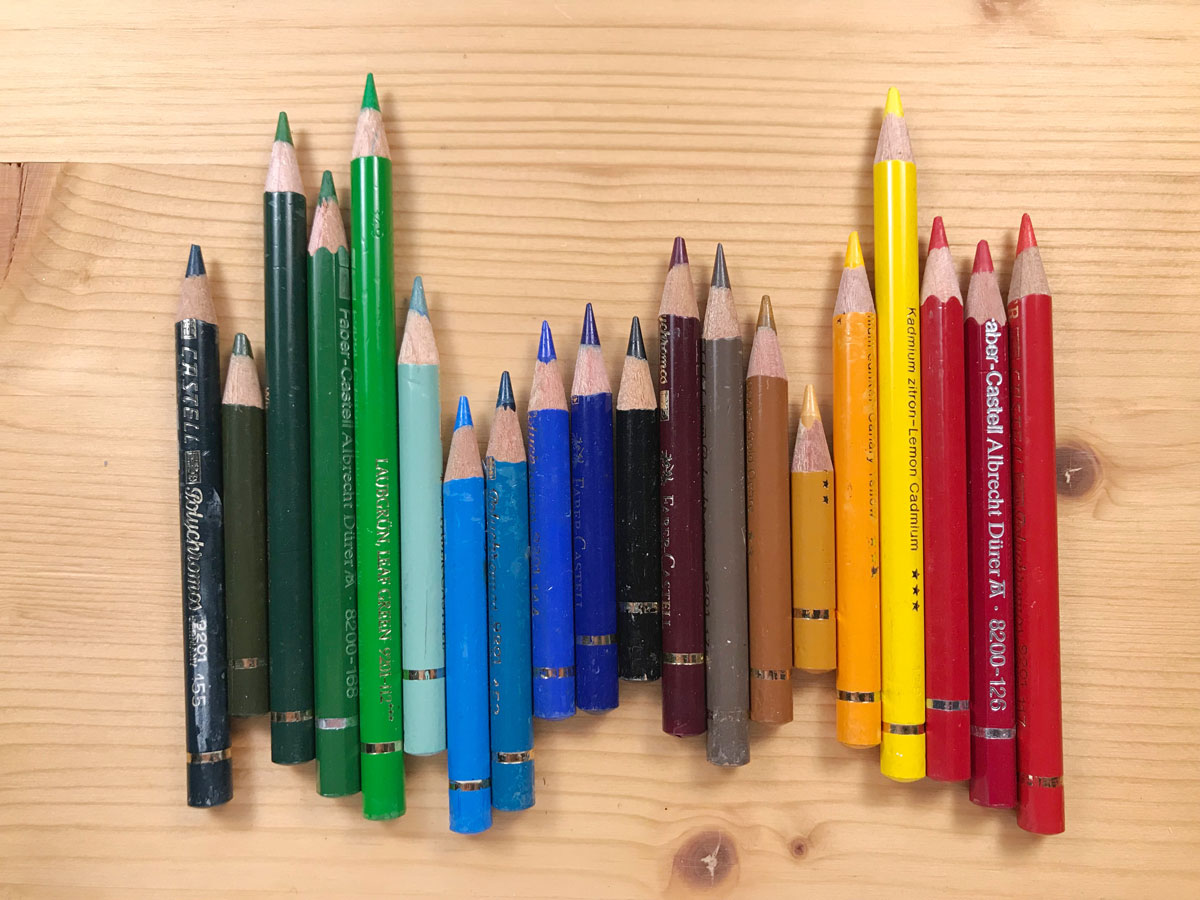
It’s winter here now, so I only bring a very limited watercolor kit and a few colored pencils. Most of the time I’m only sketching with my pencil (a HB mechanical pencil) or a pen (PITT artist pen in black, grey or sanguine) and will add the color later. I like to bring my camera along to help me remember the colors.
I hope this list was helpful to you. What does your sketching toolkit look like? Let me know in the comments!
In the next post I will give a few more practical tips for sketching outside.

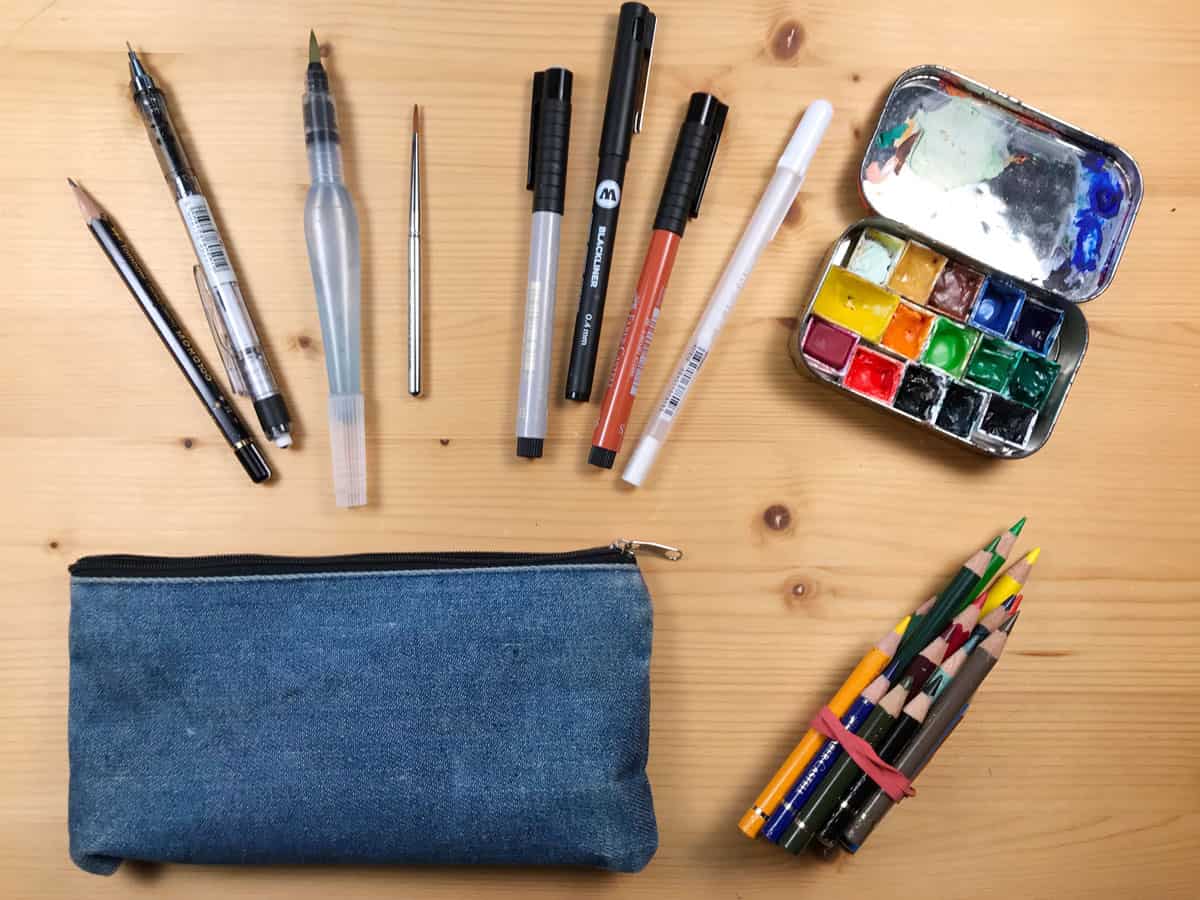

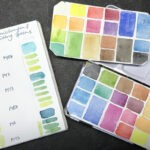
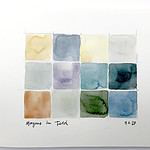
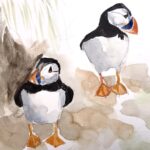
Thanks for showing your supplies. Very helpful. I enjoy reading your suggestions and info
Thank you, I appreciate it!
I love this article. I realized I’m addicted to art supplies a while back and am forcing myself not to buy more. I have a fairly large studio that is PACKED with supplies for drawing, painting, lettering, leather work, jewelry, wire, paper quilling, macrame, weaving, sewing, embroidery… One of our sons said he hopes I get rid of a lot of it before I die because it is overwhelming.
I tend to take a backpack of art supplies when travelling, but I think I’ll whittle it down to a pouch of supplies very similar to yours. Thanks for the reminder!
Art supplies definitely tend to pile up after a while, particularly when you have a large space. Let me know how it goes with the smaller travelling kit!
Simplemente precioso. Estoy pasando un momento bajo en mi vida y me he animado a retomar mi cuaderno, algo que empecé con mi hija cuando era pequeña para aficionarla a la naturaleza y que conociera las especies locales. Un abrazo, es precioso. Gracias por poner al alcance tantos consejos.
Muchas gracias y todo lo mejor para ti.